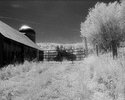Hi everybody
I'm a chemist and in my free time I volunteer in a scientific association. For the Christmas holidays I would like to organize an experience for elementary school children (6-10 years) on photography. They should build a pinhole camera (I found several tutorials on YouTube) and develop the photos obtained with the coffee method. I'm not a photography expert at all, so I'm going to ask you for some advice:
- can I use photographic paper or are photographic films better?
- how long should I leave the pinhole camera exposed to the sun?
- is the solution for development just coffee + soda or do I need vitamin C too?
- for the fixing, can I prepare a solution at home (I read something about bisulphite and thiosulphate)?
Sorry for all these questions (and for my poor english) but on the net I can not find a precise protocol.
Thanks in advance for the help!!!
I'm a chemist and in my free time I volunteer in a scientific association. For the Christmas holidays I would like to organize an experience for elementary school children (6-10 years) on photography. They should build a pinhole camera (I found several tutorials on YouTube) and develop the photos obtained with the coffee method. I'm not a photography expert at all, so I'm going to ask you for some advice:
- can I use photographic paper or are photographic films better?
- how long should I leave the pinhole camera exposed to the sun?
- is the solution for development just coffee + soda or do I need vitamin C too?
- for the fixing, can I prepare a solution at home (I read something about bisulphite and thiosulphate)?
Sorry for all these questions (and for my poor english) but on the net I can not find a precise protocol.
Thanks in advance for the help!!!






